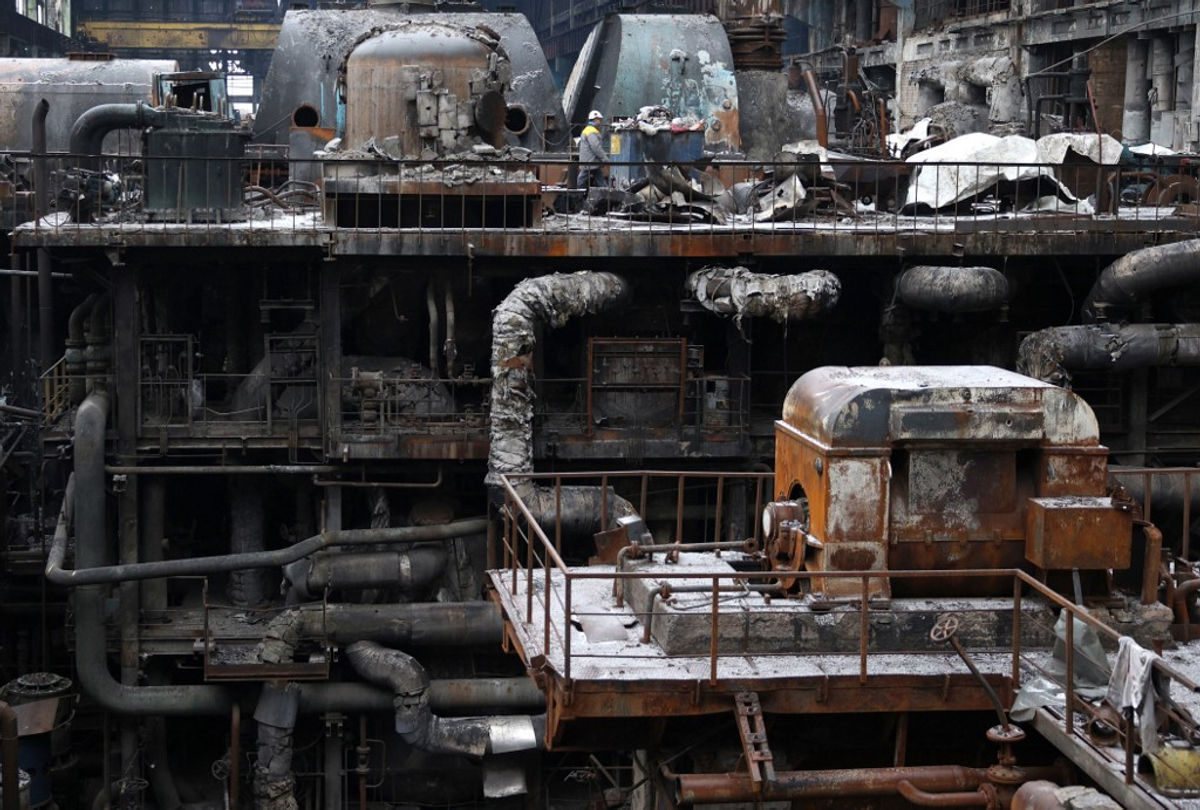By Maksym Beznosiuk
Copyright kyivpost

The Kremlin is once again weaponizing winter against Ukraine. Following the Ukrainian president’s recent warning that Moscow intended to step up targeting Ukraine’s energy system at the end of August, the Kremlin has conducted several coordinated strikes across Ukraine, targeting thermal plants, gas transport facilities, and regional distribution networks.
Recent spike in attacks
Just two days after President Volodymyr Zelensky’s statement about the ongoing Russian plans to undermine Ukraine’s preparation for the winter season, Russia conducted large-scale strikes against both electricity and gas transport infrastructure in the Sumy, Chernihiv, Kharkiv, Donetsk, and Zaporizhzhia region. Waves of drone attacks followed this within the last two weeks and have knocked out several energy facilities in the Odesa, Sumy, and Kyiv regions, leading to electricity shutdowns in several localities, including Kyiv.
The Kremlin plans to completely paralyze Ukrainian energy infrastructure as part of its hybrid warfare campaign to undermine social cohesion and destabilize the Ukrainian government. Overall, Ukraine’s Ministry of Energy has recorded nearly 3,000 attacks on energy infrastructure since March, representing a dramatic escalation since February 2022. Currently, Russian forces are actively scouting substations, transformers, and gas facilities ahead of new strikes, underscoring a systematic effort to undermine Ukrainian resilience before winter.
Insufficient capabilities to withstand winter
The Ukrainian energy system is entering the pre-winter period stronger this year, thanks to the repairs of damaged substations and improved interconnections with the EU grid. While it is a positive development, it is still not enough to offset the systemic vulnerabilities. Thermal generation remains at risk as large coal and combined heat and power plants cannot be effectively fortified, and their scale leaves them vulnerable to the Kremlin’s precision drone strikes. Additionally, while distributed generation has grown, with 1.5 gigawatts of solar, 300 megawatts of wind, and 500 megawatts of gas capacity added since 2023, these assets will not become a systemic stabilizer for another two to three years.
The Ukrainian government has also worked on ensuring significant gas reserves, particularly thanks to the recent Norwegian support for imports. The government managed to restore production losses equivalent to 500 million cubic meters caused by Russian strikes earlier this year. Most of this output has been restored, but the recovery depended on limited reserves of spare parts (e.g., turbines, spare transformers, and compressors) that may be depleted within months if attacks persist. Repair crews have developed fast-response protocols that restore power within hours. The scale of attrition highlights how quickly critical reserves could erode if the Kremlin maintains pressure via drone attacks.
Notwithstanding the above improvements, Ukraine’s resilience gap remains substantial, and Russia’s ability to concentrate waves of strikes on energy infrastructure implies high risks of intensified disruption as winter approaches.
The Kremlin’s escalated drone war
The Kremlin is synchronizing energy strikes with a massive expansion of its drone warfare. In July, some experts already voiced concerns that Russians could conduct up to 1,000 drone strikes daily. This seems quite probable considering the increased scale of investment in drone innovation and production. Since 2023, Moscow has nearly doubled the production facilities in Russia’s Alabuga Special Economic Zone in Tatarstan, while also recruiting foreign workers from Asia and Africa.
As of the middle of September, Russia has already produced more than 34,000 strike unmanned aerial vehicles and decoys, nearly nine times more than in the same period of 2024. On a single night this month, it launched a record 810 drones and decoys in swarming attacks, overwhelming Ukraine’s air defenses. Analysts estimate current Russian production capacity at around 30,000 strike drones annually, based on Iranian designs, with the potential to double in 2026.
The Kremlin is likely to escalate its drone attacks this fall, aiming to exhaust air defenses and paralyze energy infrastructure ahead of winter.
Winter risks
Intensified Russian drone attacks, combined with energy equipment scarcity, could lead to power outages ranging from 12 to 20 hours daily, and in some instances, even longer, as well as more widespread gaps in heating and power, particularly in major cities like Kyiv, Kharkiv, and Odesa. Rural households and internally displaced populations would be particularly vulnerable due to reliance on solid fuels and temporary shelters.
Ukraine is not facing this winter unprepared, having secured new funding earlier this year to bolster its energy infrastructure resilience. In July, the EU allocated approximately $700 million in EU funding for energy resilience and other infrastructure projects. On Sept. 12, Yvette Cooper, Britain’s new foreign secretary, announced a $192 million package, including $57 million for energy repairs. Three days earlier, Svitlana Hrinchuk, Ukrainian energy minister, held a meeting with a delegation of the European Commission’s Directorate General for Civil Protection and Humanitarian Aid to coordinate the creation of reserve stocks of transformers, turbines, and gas infrastructure components, with the “Ray of Hope” project focusing on keeping frontline hospitals operational.
A test for Ukraine and Europe
Ukraine enters this winter with more capacity, better repair protocols, and stronger international backing than in 2022-24. Yet the Kremlin has scaled its drone and missile production, targeting energy systems in coordinated waves and preparing for intensified pressure in January and February.
The outcome will depend less on the occurrence of blackouts than on Ukraine’s ability to sustain public morale, protect vulnerable communities, and demonstrate that energy coercion cannot yield political concessions. Ukraine needs quicker strengthening of its energy infrastructure ahead of the cold season, as this upcoming winter will be a test of Ukraine’s resilience and European solidarity.
The views expressed in this opinion article are the author’s and not necessarily those of Kyiv Post.



